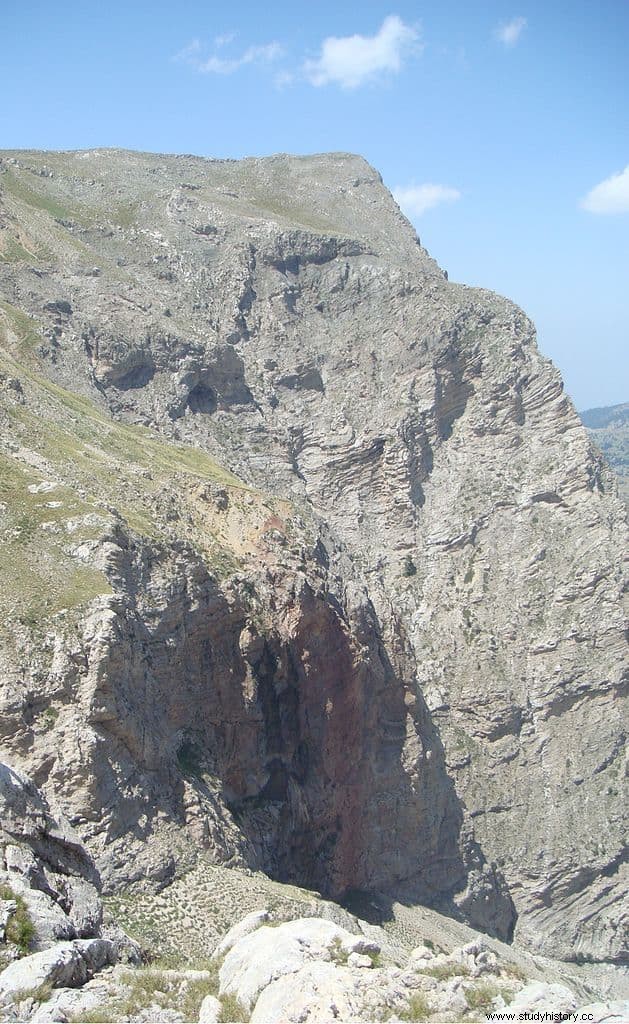In ancient Arcadia, now included in the Greek region of Achaia north of the Peloponnese, is a mountain range called Aroania that is home to the third highest peak in the country (2,355 meters).

The mountains are traversed by several rivers to the north and southeast, and the Krathi River rises from them at an altitude of about 2,100 meters at Chelmos Peak, where an impressive waterfall, the Styx Falls, forms.
This is where the mythological tradition places the famous story of the hero Achilles, whom his mother, the nymph Thetis, submerged in the waters of the Styx to make him invincible. As everyone knows, the heel by which his mother was holding him became his only weak point, in which he was finally wounded by an arrow from the Trojan Paris Alexander.
The waterfall is about 200 meters high and is the largest in all of Greece. Behind the waterfall is a small cave and a rocky slope where the water disappears to reappear at the bottom of the gorge as a mountain stream. Perhaps in ancient times the famous lagoon where Achilles was submerged was formed here. Today the waterfall only carries abundant water at the end of winter and spring.

The Dictionary of Greek and Roman Geography published by William Smith in 1854 described it as follows:

The inhabitants of the nearby towns call the river that flows from the waterfall Mavroneri , which means black water , and avoid drinking its waters, which fits the classic references quite well.
Homer talks about the water coming down from the Styx (Iliad 15.37), and Hesiod describes it as a cold stream, descending from a high and precipitous rock (…) the oldest perennial water of the Styx, flowing down a very steep place (Theogony , 785-805).
In the vicinity of the waterfall there was a city called Nónacris mentioned by Herodotus. Pausanias also mentions it, and says that it was in the Aroania mountains, next to the Styx waterfall:

In Greek mythology Stygia was the daughter of the Titaness Tethys, whose possible association or confusion with the other Tethys, the Nereid mother of Achilles, would also lead to relating Achilles with these waters.
Styx was an Oceanid who personified one of the rivers of Hades, called the River Styx for that reason, but who lived on a source in Arcadia whose waters flowed towards the underworld, and which the Greeks identified with the waterfall still visible today.
It was said that no mortal survived if he drank its waters, pottery and glass broke when submerged, even gold and silver dissolved in them. Only the hooves of horses were able to withstand this water, and that is why the gods drank it using containers made of them.

During antiquity it was thought that Alexander the Great could have been poisoned with waters of the Styx. Interestingly, in 2010, Adrienne Mayor, from Stanford University, and Antoniette Hayes, from the pharmaceutical company Pfizer, discovered that its waters could be toxic due to the presence of calicheamicin, a substance produced by bacteria present in the soil of the lagoon.
The Styx waterfall is located in a place that is difficult to access, between steep limestone cliffs and next to the only glacial lake in the Peloponnese. There is a hiking trail that leads to the foot of the waterfall, very popular with fans and onlookers.
